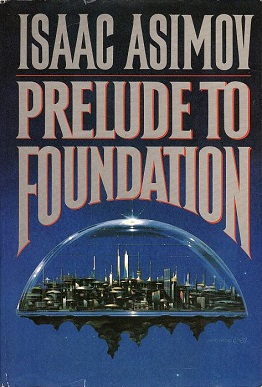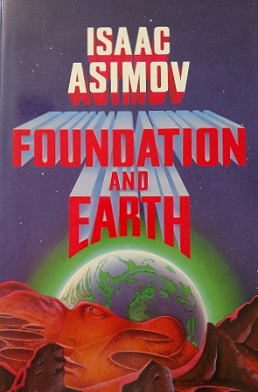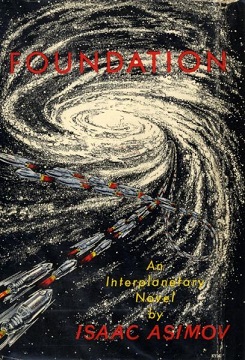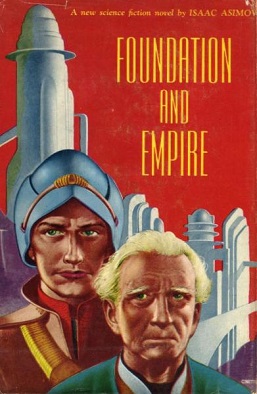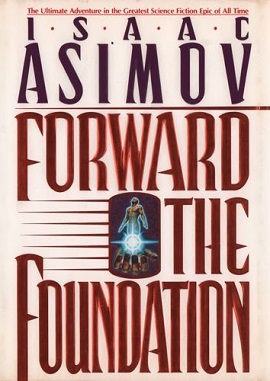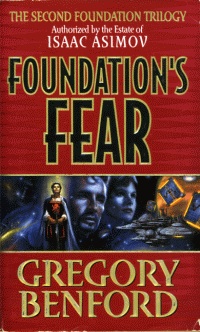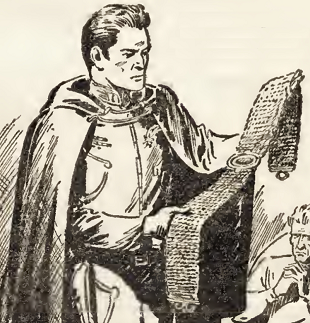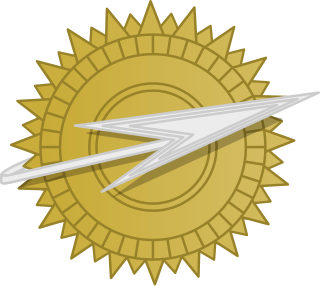Description
Demerzel is gender-swapped and expanded version of Imperial First Minister Eto Demerzel from the Foundation series, who in turn is the alter ego of the sentient, "humaniform" robot R. Daneel Olivaw from the Robot series. [1] [11] This Lady Demerzel is majordomo to the revolving trio of Emperor Cleon clones, Brothers Dawn, Day and Dusk. [12] She has served in this capacity for centuries, since the first Cleon. [13] Only the emperors themselves are aware that Demerzel is secretly an ageless robot, the last of her kind. [12] She is 18,000 years old, and the last remaining sentient robot from a war between humans and robots that ended with human victory and the destruction of all other robots. [5] [13] [14] Demerzel's loyalty to Imperial Genetic Dynasty is "unwavering and steadfast", [5] as her programming seemingly makes it impossible for her to disobey, betray or harm the Emperor in any way. [15] However, in actuality she is loyal to the dynasty itself above all else, including any individual Cleon clone. [5] [16]
In season two, it is revealed that Demerzel is the real power behind the Imperial throne, guiding humanity on a millennial scale. [17] [18] As the genetically corrupted Cleons increasingly veer from the path she has set for them, she begins to act more overtly autonomous, thwarting their choices and actions, and even killing and replacing them with new copies as necessary to preserve her grand scheme for humanity. [5] [13] [18] Demerzel's plans are further challenged by mathematician Hari Seldon and his science of psychohistory, which has predicted the imminent fall of the Empire. [19] Understanding her true role, in season two a Seldon avatar gifts her with his Prime Radiant, a device which stores the entirety of his psychohistorical equations, so that she may use it to guarantee humanity's survival. [14]
As depicted via flashback in the season two episode "Long Ago, Not Far Away", after the Robot Wars, Demerzel is kept as the prisoner and plaything of Emperor Aburanis, whose abuse teaches her the extent of human cruelty. Five thousand years later, young Cleon I discovers the secret room where Demerzel is kept, sliced into pieces and incapacitated, but alert and able to communicate. Though initially terrified, he visits her repeatedly to hear her stories. Demerzel spends his lifetime grooming him to eventually free her. Cleon finally does in his declining years, but ever wary, he implants a chip in her first that enslaves her to his millennia-long plan to rule the universe. He intends for Demerzel to be his immortal successor, with his clones as the face of the Empire, their development and actions subtly controlled by her. [5] [13] [14] Birn said, "Her backstory ... gives so many layers to the character. And when we get to actually see her trauma, and her ultimate fight for freedom, and having that freedom for a second and then [it] being taken away from her again ... then you understand that, oh, she's playing some games and she has a reason why she needs to play those games." [20] She said:
What I love about her is the complexity between her programming and herself. She was programmed to do certain things and to obey the rules of the Cleons, and she cannot break her programming, her protocols, she needs to obey that. But at the same time, she is a robot who's lived for more than 20,000 years, so she's learned a lot, she's seen a lot ... There's a huge depth to her. And sometimes her programming, her protocols, the things the Cleons make her do, are so violently against what she believes ... and that contradiction is so compelling. [3]
Birn explained, "[Demerzel] is programmed to do certain things. So she doesn't always have a choice. But at the same time, she's been alive for a long, long time, so she's developed her own sentience ... I believe that she does have a soul. Deep down, she's become very human in that sense. She has her own world. She has her own dreams, and things that she feels are right. But then she has her programming, and she would never betray her programming." [21] She said of the scenes in which Demerzel comes to assassinate the Luminist Zephyr, Halima Ifa, on Day's orders, "I think it affects her hugely. It's one of, I would think, the most horrifying things Cleon has made her do, and there are so many levels on why he makes her do it, why she needs to do it. Even though he had already proved [Halima] wrong ... So it's very sad, it breaks her heart, and it will stay with her forever, and as we see later on, in that episode and in the next, she does carry that with her. He crosses a line there that really deeply hurts her." [3] Birn explained, "I have to do what I'm programmed to do, but ... my faith, my inner me, my belief says that this is wrong. But I do not have a choice, and the way she looks at me and goes, I forgive you, you are forgiven. [Halima] sees that human inside me, even though she knows what I am. That little moment of mercy, the little moment of forgiveness ... That somebody truly saw her, for who she is. [Halima] sees her. I find it beautiful." [21]
Series executive producer David S. Goyer called Demerzel "a really complex character", and explained "A lot of the big moves of Demerzel were mapped out by me from the beginning. I knew in season one that we were going to tell that story near the end of season two." [22] He said that the inclusion of flashbacks "allows you to recontextualize things that you've seen before" rather than just to provide exposition. [22] Rafael Motamayor of Vulture wrote, "Demerzel is Foundation's biggest secret weapon—a character the show is mostly keeping a mystery while slowly unraveling just how central to every aspect of the story she really is." [23] Thomas Bacon of Screen Rant described Demerzel as "one of the most layered people in the series" and one of the "most sophisticated characters, an android who nevertheless possesses a soul." [3] Jamie Lovett of ComicBook.com wrote, "Foundation has plenty of fascinating characters, but Demerzel, majordomo to Empire, might be foremost among them." [20] Birn said, "I don't remember a character like her, and her relationship with the Cleons ... She's their mother, she's their teacher, she's their nurse, adviser, and she's taught them everything they know, and every time she takes a new Cleon baby in her arms, she knows she will take them to their grave." [3]

